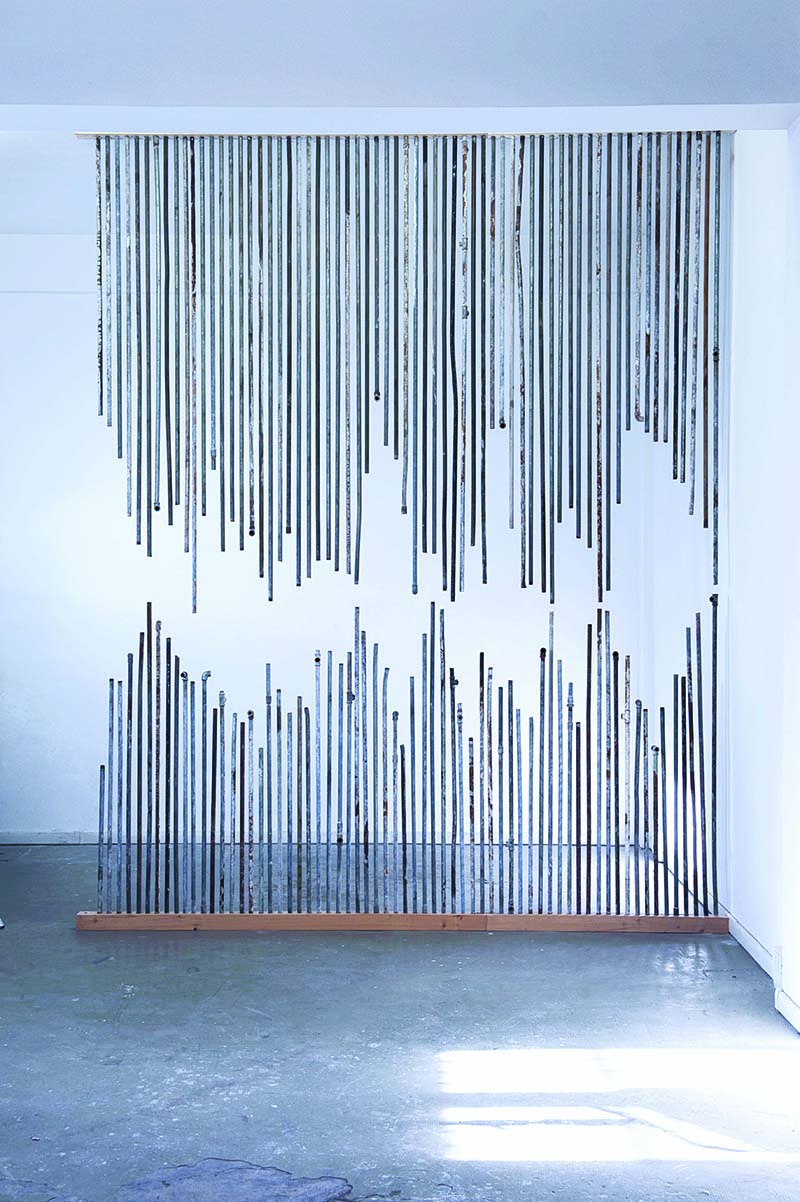


Michela de Mattei, 'Untitled (Postmodernism)', 2011-2012. Image courtesy of the artist and Belmacz Gallery
If you are interested in journeys of the body and the mind, digital and geographical spaces, then the work of Michela de Mattei will surely intrigue you. Working with moving image, sound and large-scale sculpture, she poetically explores the polarities between what is given and what is imagined, what is real and what is artificial.
Last summer I saw de Mattei’s series of videos called Estée Lauder during a major Serpentine Galleries’ event that explored the role of animals from different perspectives. Having filmed cheetahs in their cages for her solo show at the Roman gallery Ex Elettrofonica in 2014, de Mattei’s work was fitting. Throughout 2017 and 2018 she “collaborated” with an Indian Myna bird called Estée Lauder, which gives its name to the works. In the videos de Mattei tries to communicate with the bird via skype, attempting to teach her English or to hypnotise her using internet tutorials. The videos are a collage of found and recorded imagery; life drawing classes at the renewed Académie de la Grande Chaumière in Paris, solitary cityscapes in Homerton, and Estee Lauder’s surroundings in a house in Gloucestershire. Combined with an evocative soundtrack, the viewer is taken on a fast-paced journey. It is also a reference to de Mattei’s own journey, moving from Rome, where she studied Philosophy and trained with painter Giuseppe Gallo, to London via Paris. It maps her own internal journey learning English and being a self-taught artist within the highly structured art world.
You may be aware of an artist-run space in Homerton called Limone, co-founded and co-run by de Mattei. In one of these shows de Mattei herself participated by reshaping the pipework of the ceiling to modify the main structure of the studio-space. Indeed, at the core of de Mattei’s interests are conceptual notions around structures, schemes and other types of classification systems which she visually disrupts, proposing a reconfiguration of objects and environments.
I first encountered her work in Rome, the city where we both grew up. I remember a church where de Mattei installed a series of columns in 2013, re-imagining and re-sketching its original placement. In the 1920-30s Mussolini moved the building to create a grand boulevard from the Colosseum to the Piazza Venezia, the symbolic centre of Fascist power and the main site for his speeches.
Questioning given histories is crucial for de Mattei. Throughout 2011 the artist travelled around Italy to highlight other lesser known narratives: the beaches in the outskirts of Rome where Pier Paolo Pasolini was shot; Bolognano in the region of Abruzzo where Joseph Beuys lived; and the fringes of Pisa where Ezra Pound was arrested by the Americans for treason in 1945. Sticking zinc poles into these silent grounds, de Mattei’s actions function as a way of making these histories speak again, highlighting the silences and suppression of memories that shape Italy.
Be prepared to be totally immersed in her forthcoming solo show at Belmazc gallery in February 2019. When I visited her new studio, de Mattei was just coming back from a research trip in Seville to explore the complexities of bull-fighting, while preparing to work on a series of large-scale abstract canvases. “I want to explore what it means to feel vulnerable through different viewpoints”, she tells me. I can’t wait to see and to experience where this new journey will take her.